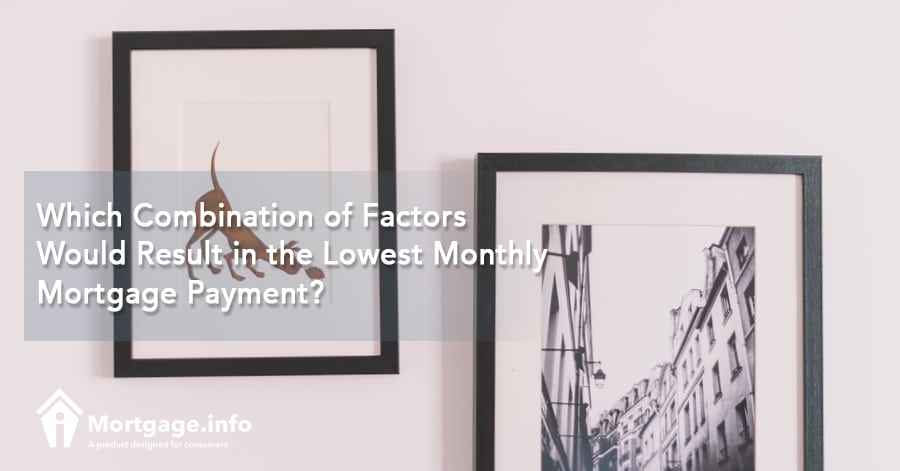
You are ready to buy a home, but you worry about the monthly payment. Will you be able to afford it? How can you keep it as low as possible?
Compare Offers from Several Mortgage Lenders.
While a mortgage payment is a big undertaking, there are ways to help keep it as low as possible. We help you understand the most important factors below.
Large Down Payment
Each loan program has a minimum down payment requirement. Some loan programs don’t require any down payment at all, such as the VA and USDA loans. While this can be a nice feature if you don’t have any money saved, it can make for a large monthly payment. The more money you have to borrow from the bank, the larger your monthly payment will be.
If you can swing a larger down payment, you can help keep your payment low. For example, FHA loans require a 3.5% down payment, but if you can make a 10% down payment, you knock the payment down just by borrowing less money. You’ll still pay mortgage insurance on the loan, but you’ll pay less mortgage insurance by borrowing less money.
Another benefit of making a large down payment is the lack of Private Mortgage Insurance you will pay on a conventional loan. If you make a 20% down payment, you can avoid the PMI altogether. If you put down less, but still more than the 5% minimum down payment, you’ll pay PMI, but for a shorter time. Conventional loans allow you to request cancelation of the PMI once you owe less than 80% of the home’s value.
Unfortunately, if you use a government-backed program, such as the FHA or USDA loan, you will pay mortgage insurance for the life of the loan, so a larger down payment won’t help with that aspect. It also won’t help with VA loans only because they don’t require mortgage insurance.
Long Term
You’d think you would want to take the shortest term possible, but it may be the opposite if you want the lowest monthly mortgage payment. A short term helps you pay off your loan in fewer years. That’s a nice thought, but if you need a low payment, you’ll want the longest term available.
Click to See the Latest Mortgage Rates.
Today, the longest term available is the 30-year loan. This term amortizes your loan over 360 months. Other loan terms that lenders offer include the 25, 20, and a 15-year term. Obviously, the 15-year term would have the largest principal payment because you only have 180 months to pay the loan off. That’s half of what the 30-year loan provides.
The good news about taking a 30-year loan is that you can make a larger payment if you are able. You can even use a mortgage calculator and figure out what a 15-year payment would be and make those payments. The extra money you pay on top of your minimum payment will start paying down your loan’s principal faster.
Low Interest Rate
Everyone wants a low interest rate, right? The less interest you pay to borrow money, the better you feel. A low interest rate can also help keep your mortgage payment low. Your mortgage payment typically consists of:
- Principal
- Interest
- Real Estate Taxes
- Homeowner’s Insurance
- Mortgage Insurance (if applicable)
If you have a low interest rate, no matter how much money you borrow, you keep your payment lower. This can help make your loan payments more affordable.
In a perfect world, you would be able to make a large down payment, take the longest term, and secure the lowest interest rate. If you can’t achieve this goal, you can work on at least a few of the factors. For example, you may not get the lowest interest rate if you take a 30-year loan because lenders take a bit of a risk stretching your loan out that long. But, if you can counteract the long term with a large down payment, you may get a lower interest rate than you would if you made the minimum down payment and took the longest term.
It’s all about maximizing your factors as well as you can. Each borrower will have a different ‘sweet spot’ that helps them get the lowest monthly mortgage payment possible.
